Castle Acre |
|
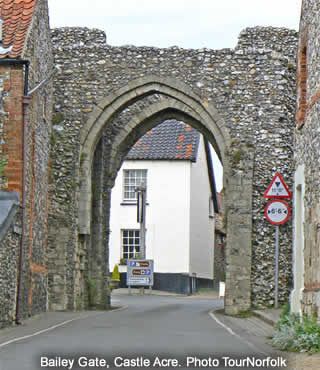 |
|||
A lovely rural Norfolk village, famous for its Castle and Priory |
||||||
|
||||||
Two ancient buildings dominate the lovely village of Castle Acre, the Norman Castle and the Priory. Both are now in ruins, but they offer a fantastic glimpse into the past and are one of the best examples of a Norman settlement in the country. |
||||||
Visitors to Castle Acre are entranced by the special atmosphere of this medieval walled town, which lies within the outer bailey of an 11th century castle. Castle Acre takes its name from the castle built in the 12th Century by the Normans. Although now only its walls and ramparts remain, it attracts visitors all year round and offers splendid views of the surrounding Norfolk countryside. An ancient gateway arch, called the Bailey Gate, was the north gateway to the medieval town. In addition to the Castle and the Bailey Gate, visitors should see the beautifully maintained Castle Acre Priory, whose walled herb garden and the prior’s lodging give an insight into the life of this once powerful priory. This lovely village also has several tea rooms and two traditional village pubs. |
||||||
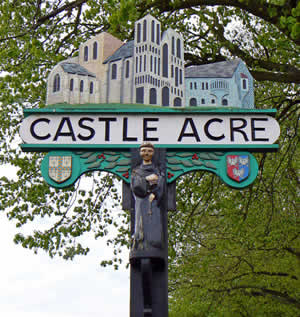 Castle Acre Village Sign |
||||||
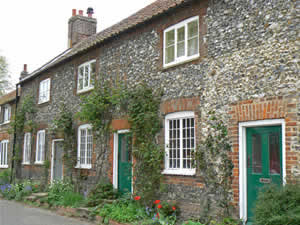 Flint cottages in the centre of Castle Acre |
||||||
 Church Gate Tea Room & Bed & Breakfast |
||||||
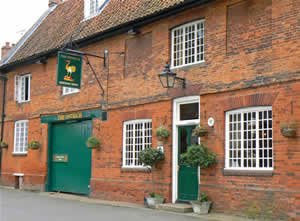 The Ostrich Pub, opposite the village green |
||||||
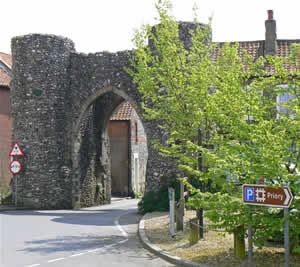 The Bailey Gate |
||||||
|
||||||
At one end of the village is the ancient Parish Church of St James the Great. Most of the building you see today was built during the 15th century, although some parts date from an earlier period. Highlights of the church include a 15th century elegant font, the rood screen (with painted panels), a pulpit looking like a wineglass and various other interesting features that you can visit and discover for yourself! |
||||||
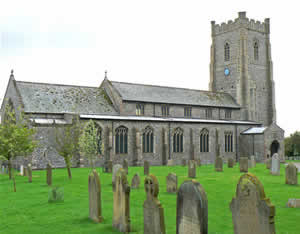 The parish church of St James the Great |
||||||
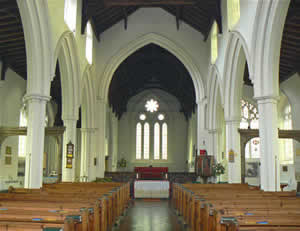 Inside the church |
||||||
A path leads from the centre of the village to the ruins of the Castle (free), which was founded soon after the Norman conquest of 1066 by William de Warenne, first Earl of Surrey as his most important estate in Norfolk. The Castle is strategically placed where the ancient trackway known as the Peddars Way crosses the River Nar. The Castle is a great example of a Motte and Bailey - the Motte was the residence of the owner and the last refuge in the event of attack, the Bailey below would contain the living quarters, stores and workshops. Paths lead around the site allowing you to explore both the Motte and Bailey in detail. |
||||||
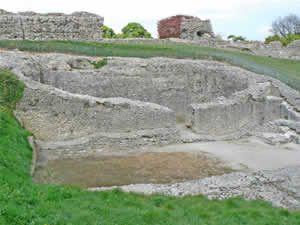 The summit of the Motte |
||||||
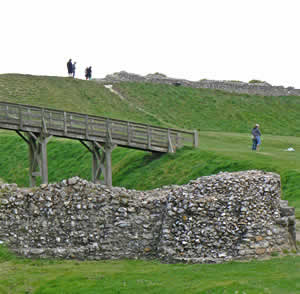 Exploring the Castle ruins |
||||||
Walking away from the village, we come to Castle Acre Priory, which despite being mainly in ruins, is one of the best preserved monastic sites in England. The priory originates from the 11th century after William de Warenne II and his wife Gundrada visited the great French monastery of Cluny. They were really impressed and decided to build similar ones to introduce the Cluniac order of monks to England. Many of the remains of the building they created at Castle Acre can still be seen today, including the magnificent west-end and prior's lodging. There is also a visitor centre, re-created herb garden and various other displays, all managed by English Heritage (paid). |
||||||
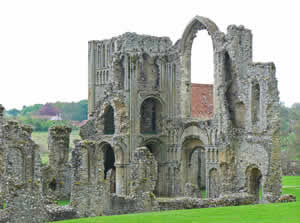 Castle Acre Priory |
||||||
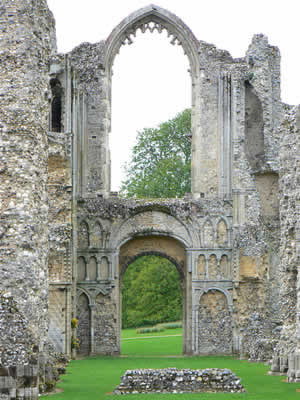 The west end, still standing almost to its original full height |
||||||
|
||||||
|
||||||
Car-parking can be found on the street around the village green (free) and at the Priory. |
||||||
|
Pocket Britain is optimised for use on a smartphone or tablet with internet access. All content is subject to copyright. All reasonable methods have been used to ensure information supplied is accurate at the time of publication. However, it is advisable to check information before relying on it. Privacy Policy |